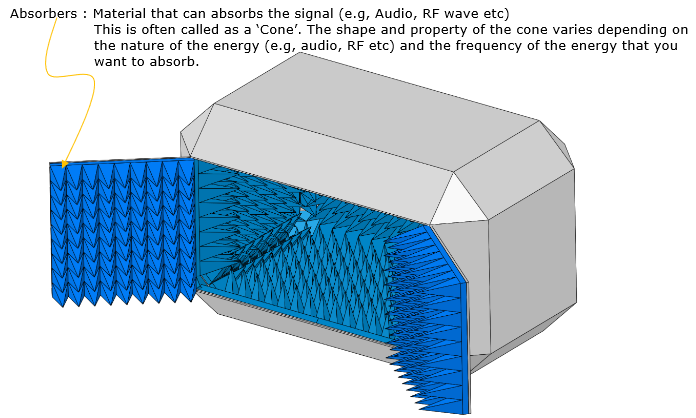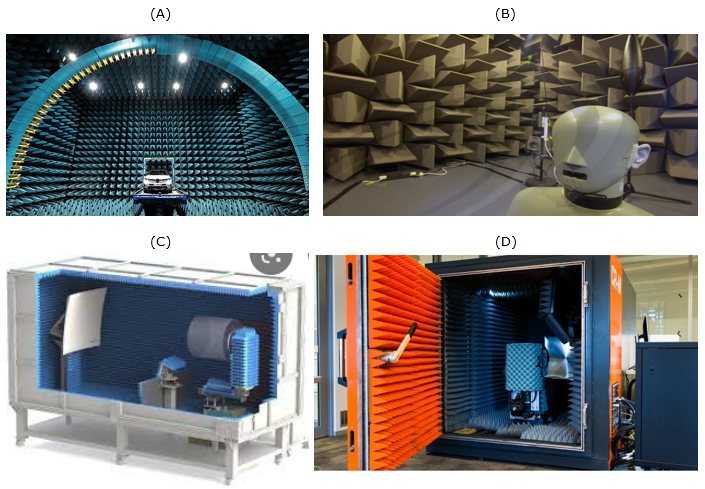|
RF |
||
|
Anechoic Chamber
Anechoic stands for 'An (none) + Echoic'. Literally speaking Anechoic Chamber is a type of chamber that does not echo. More specifically, it is a type of chamber that does not reflect any signal back to the measurement sensor placed within the chamber. How to make it not reflect any signal to the measurement sensor ? A typical method is to stick absorbers with a specific shape to everywhere that may reflect the signal as shown below. Those absorver usually has a shape of pyramid and often called as a cone. The cone is made up of the material that absorbs the signal/wave and the shape is designed in such a way that the signal is reflected (if not 100% absorved) in random or specific directions away from the measurement sensor (e.g, measurement antenna). The material of the cone (abosorber) is selected depending on the nature of the signal (e.g, audio or electro-magnetic signal) and the dimension and shape of the cone is designed differently based on the characteristics and the frequency of the signal.
Image Source : Click here
Why we need a Anechoic Chamber ?
Simply put, we use the Anechoic Chamber for the accuracy and repeatability of the measurement/test. If we measure a signal from a source (i.e, transmitter) in ordinary chamber or in open space with many reflecting objects, the measured value may vary because the signal reaching the DUT is summation of the original signal (i.e, line of sight signal) and many other versions of reflected signal. This kind of situation would make the measurement not repeatable (i.e, different values from every trial) and in some cases the reflected signal would interfere with the line of sight signal in negative way making the signal connection unstable.
Types of Anechoic chambers
There are many different types and sizes of anechoic chambers. Some of the examples are shown below. There is a huge chambers like (A) so that you can put a whole vehicle there. Usually chambers for audio testing (B) is usually pretty large because of the wave lengh of audio is pretty long (i.e, frequency is low). Usually the chambers (C, D) being used for testing mobile phone in RF/mmWave range is relatively small comparing to (A), (B).
|
||

